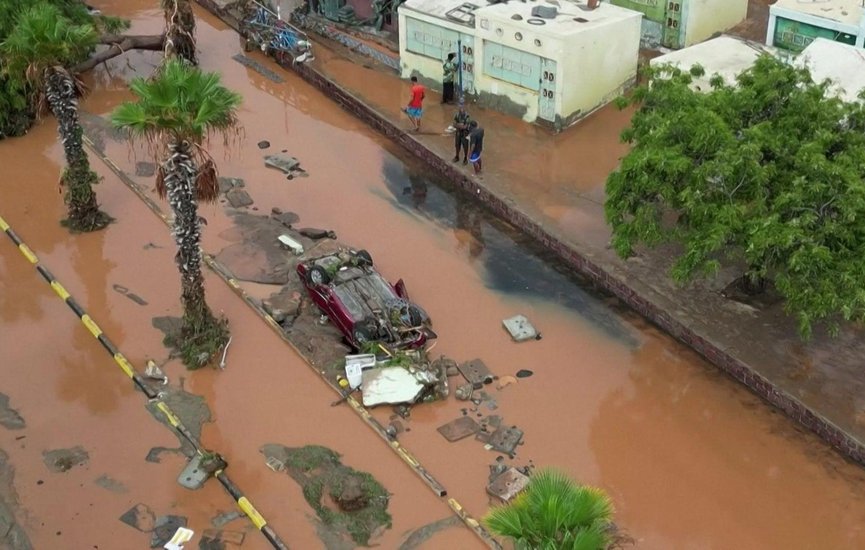Cape Verde has declared a state of emergency on the islands of São Vicente and Santo Antão following devastating flash floods that have claimed at least nine lives and displaced over 1,500 residents. Authorities have warned that the situation remains critical, with rescue operations continuing and hundreds of families still trapped or stranded.
Tropical Storm Erin caused the catastrophic flooding. It brought record-breaking rainfall, totaling 193 millimeters (7.6 inches) in just five hours, a figure exceeding the islands’ annual average precipitation. The torrential downpour overwhelmed rivers and drainage systems, causing widespread damage to homes, roads, vehicles, and public infrastructure. Entire neighborhoods were submerged, forcing residents to evacuate at a moment’s notice.
Government officials have activated emergency response teams, mobilizing police, firefighters, and military personnel to assist in search-and-rescue operations. Temporary shelters have been set up for displaced families, and local authorities are working to ensure the provision of food, water, medical care, and hygiene supplies. The state of emergency allows the government to fast-track funding for reconstruction and repair, and to coordinate relief efforts more efficiently across the affected islands.
Meteorologists have described the flooding as unprecedented in Cape Verde’s modern history. Experts warn that climate change has increased the frequency and intensity of extreme weather events in the region, making islands like São Vicente and Santo Antão increasingly vulnerable. Officials are calling for long-term strategies to improve infrastructure resilience, reinforce early-warning systems, and enhance community preparedness for future disasters.
The floods have also sparked a strong response from the Cape Verdean diaspora across Europe, North America, and Africa. Crowdfunding campaigns and relief drives have been launched to provide immediate assistance to affected families, with contributions supporting food, shelter, clothing, and emergency medical care. Community organizations and volunteers have rallied to coordinate logistics, demonstrating solidarity and unity during the crisis.
This disaster highlights broader concerns about climate resilience across African island nations. With extreme weather events becoming more frequent and severe, there is a growing need for coordinated national and regional strategies to protect vulnerable populations. Experts emphasize that investments in infrastructure, urban planning, and early-warning systems are crucial to minimizing loss of life and economic damage in future disasters.
For now, Cape Verde faces a challenging road to recovery. Government authorities continue to monitor the situation, prioritize the safety of residents, and implement immediate relief measures. Meanwhile, affected communities are calling for sustained attention and support to rebuild homes, restore livelihoods, and strengthen resilience against the next inevitable storm.
